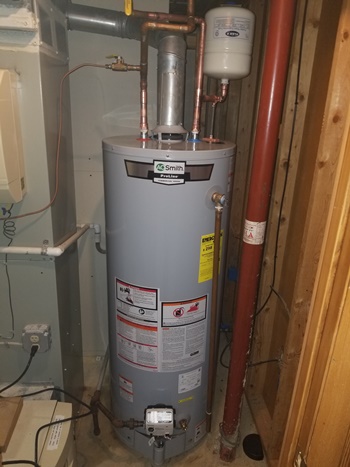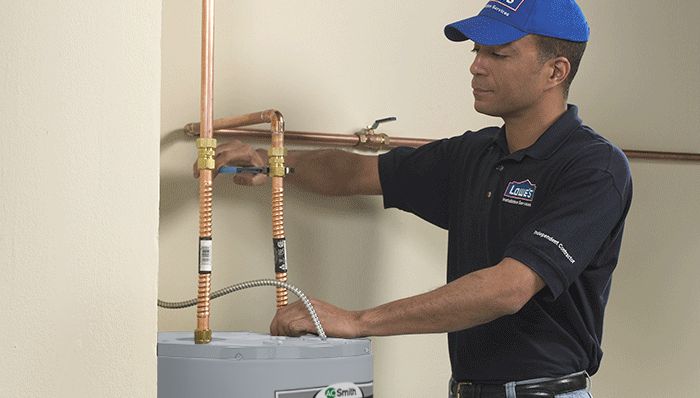Caring for Your Home's Hot Water System: Important Guidelines
Caring for Your Home's Hot Water System: Important Guidelines
Blog Article
We have stumbled on this article on Water Heater Maintenance Tips You Can't Afford to Forget down the page on the net and believe it made good sense to discuss it with you over here.

Warm water is crucial for everyday comfort, whether it's for a rejuvenating shower or washing dishes. To ensure your hot water system runs successfully and lasts much longer, regular maintenance is crucial. This post provides useful suggestions and understandings on exactly how to maintain your home's warm water system to prevent disruptions and pricey repairs.
Intro
Preserving your home's warm water system may seem daunting, yet with a couple of basic steps, you can guarantee it operates smoothly for many years to come. This overview covers whatever from understanding your warm water system to do it yourself maintenance tips and recognizing when to contact expert aid.
Value of Maintaining Your Warm Water System
Regular maintenance not just extends the lifespan of your warm water system yet likewise guarantees it operates successfully. Neglecting upkeep can result in lowered efficiency, greater power bills, and also early failing of the system.
Indicators Your Hot Water System Demands Upkeep
Understanding when your warm water system needs focus can avoid significant issues. Keep an eye out for indications such as irregular water temperature, weird noises from the heating unit, or corroded water.
Understanding Your Hot Water System
Before diving right into maintenance tasks, it's practical to understand the fundamental elements of your warm water system. Generally, this includes the hot water heater itself, pipes, anode rods, and temperature controls.
Regular Monthly Upkeep Tasks
Normal monthly checks can help capture small issues before they escalate.
Flushing the Hot Water Heater
Purging your hot water heater removes sediment buildup, enhancing effectiveness and lengthening its life.
Monitoring and Changing Anode Rods
Anode poles stop deterioration inside the container. Inspecting and replacing them when worn out is important.
Inspecting and Changing Temperature Settings
Readjusting the temperature setups makes sure optimal efficiency and safety.
DIY Tips for Upkeep
You can carry out numerous maintenance tasks on your own to keep your warm water system in leading problem.
Checking for Leakages
Routinely evaluate pipelines and links for leaks, as these can result in water damage and higher costs.
Testing Stress Relief Valves
Checking the pressure safety valve guarantees it functions appropriately and prevents extreme pressure build-up.
Shielding Pipes
Insulating hot water pipes reduces heat loss and can save energy.
When to Call an Expert
While DIY upkeep is valuable, some concerns require specialist experience.
Complex Issues Needing Professional Assistance
Instances include significant leaks, electrical issues, or if your hot water heater is consistently underperforming.
Regular Specialist Upkeep Conveniences
Professional maintenance can include detailed assessments, tune-ups, and ensuring conformity with safety and security criteria.
Verdict
Routine maintenance of your home's warm water system is necessary for performance, durability, and price financial savings. By adhering to these ideas and understanding when to seek specialist help, you can ensure a reputable supply of warm water without unforeseen disturbances.
How to Maintain an Instant Hot Water Heater
Before tinkering with your hot water heater, make sure that it’s not powered on. You also have to turn off the main circuit breaker and shut off the main gas line to prevent accidents. Also turn off the water valves connected to your unit to prevent water from flowing into and out of the appliance. 2. When you’re done, you have to detach the purge valves’ caps. These look like the letter “T†and are situated on either side of the water valves. Doing so will release any pressure that has accumulated inside the valves while at the same time avoid hot water from shooting out and burning your skin. 3. When the purge valves’ caps are removed, you have to connect your hosing lines to the valves. Your unit should have come with three hoses but if it didn’t, you can purchase these things from any hardware or home repair shops. You can also get them from retail stores that sell water heating systems. Read the user’s manual and follow it to complete this task properly. When the hosing lines are connected, open the purge port’s valves. 4. You should never use harsh chemical cleaners or solutions when cleaning your unit. Make use of white vinegar instead. It should be undiluted and you’ll probably use about 2 gallons. 5. Now flush your water heater. This task should probably take about 40 minutes. We can’t give you specific directions for this because the procedure is carried out depending on the type, model and brand of your heater. With that being said, refer to the user’s manual. 6. When you’re done draining the unit, you have to turn off the purge port valves again. Remove the hosing lines that you earlier installed on each of the water valves. Put the valve caps (purge port) back in their respective places and be very careful so as not to damage the rubber discs that are found inside these caps. 7. Now that everything’s back in place, check your user’s manual again to find out how to reactivate your water heating system. 8. Once it is working, turn one of your hot water faucets on just to let air pass through the heater’s water supply pipes. Leave the tap on until water flows smoothly out of it. https://www.orrplumbing.com/blog/2014/september/how-to-maintain-an-instant-hot-water-heater/

As a serious person who reads on Tips on Maintaining a Water Heater, I think sharing that piece of content was a great idea. Make sure you pause to distribute this blog post if you liked it. I thank you for reading our article about How to Maintain Your Water Heater & Prolong its Life.
Quote & Schedule Report this page